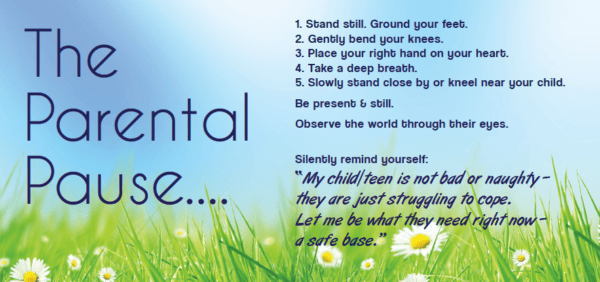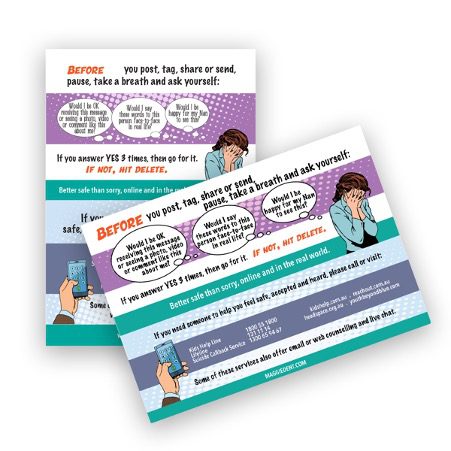Building Resilience, Newsletter Articles, Play & Nature Play, Posts for Parents
Nurturing the inner world of our children and teens

Many years ago, a 16-year-old student shared with me a story that left an indelible mark upon me. One weekend as a 12-year-old, she was reading on her bed. She lived on a farm with her parents and siblings. Suddenly, she had an urge to put her book down and go for a ride on her bike. This urge was quite persistent so she put the book down and jumped on her bike. As she was riding she became aware of the sound of an engine revving. She was curious as to what it was and followed the sound. What she found was that her dad had become trapped under the tractor. She was able to ride home fast to tell her mum to get emergency services to her dad as soon as possible. She explained to me that she believed that somewhere inside her was an invisible force that nudged her to make the choices she did that day – choices that saved her dad’s life.
Over the years as a teacher, counsellor and parent I have heard of similar experiences – a sense of knowing when an individual had a choice to make that would end up with much better consequences. For some of us, this can be known as our intuition, for others who have a faith they may think of it as a God essence, while for others it might be an inner compass or their higher self.
Given that the full workings of the human mind, the conscious and unconscious, the ego mind, the shadow and our capacity to access the higher mind or even the collective unconscious is unquantifiable, maybe we need to consider helping our children and teens to know that deep within them, is a quiet voice always wanting the best for them. Let’s apply the KISS principle.
When I did my postgraduate diploma in counselling and therapy, we explored traditional psychology and some very non-traditional ways of exploring the human psyche. Traditional indigenous cultures have always had a medicine person, or a shaman or someone known as the healer. Very simply, many of their strategies were helping people to find their own higher consciousness and quietening the irrational voices of the ego and the shadow.
One of the best ways to encourage and nurture our little ones to be able to hear that quiet voice within, is for them to experience environments and landscapes that allow for complete natural transcendence.
Lots of time in nature, lots of time in quietness, lots of time being unhurried and immersed in the present moment. Thankfully our little ones are wired to do this and any parent who has got frustrated with how long it can take a toddler to walk from the car to the front door will know what I mean. Please see this as a beautiful opportunity to nurture the inner world of your children!
The power of the pause
I have seen many versions of this meme below and I think it beautifully captures how the minds of busy parents can seem at times. It’s a great metaphor for the enormous challenge for most of us, especially parents, to access their calm wise voice within, when we have so many distractions.

Our heads are often too full of hurried thoughts, mindless ego chatter, to-do lists, self-criticism and self-judgement to be able to hear the quiet whispering of the higher self, “it’s okay – you’ve got this”.
Our little ones are naturally mindful. One of the key messages about being mindful, is to become present just like they are. With practice, teens and adults can do this. The brain’s neuroplasticity means we can form new neural pathways with practice at any time of life.
Healthy habits around reminding oneself to pause, to calm your sympathetic nervous system and to give your inner compass a chance to be heard can vary. When I was troubled as a child on our farm, I went for long walks in nature. This created a habitual pathway that I still use today.
A neuropsychologist explained to me once that when we go for a walk when we are stressed, the first part of the walk can actually accelerate the noisy chatter of the ego mind and the shadow.
However, the stimuli of the natural environment will gradually soothe the nervous system and the walking on the earth can be grounding and it can help us get out of our busy heads. I found it fascinating and notice that it is quite true. There seems to be a point in the long walk when I am troubled, when I take a sigh and notice the sky, the grass, the birds, the beach – anything but what is troubling me. Indeed it is a bit of a family joke that the boys could always tell how stressed or angry I was, by how long I took on my de-stress walks!
An intention to pause can mean we simply choose to breathe more deeply and to stop. Imagine if we could hit the pause button on the endless automatic negative thoughts (ANTS) that flood our minds at times! Well you actually can with practice. Sometimes choosing to move your body to a different location can distract the ANTS enough for your higher mind to be heard.

Today’s digital children are having less time in states of natural mindfulness and many neuroscientists including Dr Susan Greenfield and Dr Mari Swingle have clear evidence, that the excessive stimulation that children and teens are exposed to with technology, is changing their capacity to think deeply, to ponder and to experience deep introspection and reflection. These experiences help to nurture the higher self and our intuition.
Much of the unhelpful or toxic behaviour we see online is impulsive and done without thought. It is a part of the rapidly moving landscape of the digital highway and a consequence of the changes that have happened possibly in the growth of the mature adult brain. Excessive stimuli especially during adolescence can delay the way alpha brain waves create mature cognitive processing.
“As early as 2005 to 2008 we were aware that higher arousal and the dual or divided attention required for multitasking on multiple devices in multiple modes – doing homework while messaging and listening to music – was stressful and could reduce efficiency. But it also slows the development of the frontal cortex. The divided attention required for multitasking thwarts the development of judgement and the ability to see the big picture.”
– Dr Mari Swingle, i-Minds: How and why constant connectivity is rewiring our brains and what to do about it. Second edition (2019).
Technology is here to stay however parents can create opportunities for mindfulness, for time in nature, for reflection and for natural transcendence and the more the better. Teaching our children to pause before they do things, knowing that they are wired for impulsivity, can gradually help them pause before they make other decisions. This need to stop and think is one of the reasons we created these cards and posters for homes and schools.
Having conversations with your kids from an early age about this imaginary wise voice that hides within them can be incredibly helpful. For some children it can be using the heart as a metaphor for where that wise voice lives.
Remind them that this voice of inner guidance is the very best friend that they have. Just like any friendship we need to nurture it and encourage it and make time for it to be a regular part of our lives.
One of my sons was chopping some kindling for a fire when he hit his finger with the axe. As we were driving to the emergency department, I asked him if he remembered having any thoughts just before he bought the axe down. His reply was that he did and that the thought was that it wasn’t a good idea. He had ignored it. We need to encourage our kids that there are often random thoughts when we are making choices and encouraging them to pause and hear them is incredibly important.
Tuning into the senses
Part of our instinctual survival systems built into our primitive brain mean that our body will often display sensations of alert, before the conscious mind can register threat. Essentially this is what anxiety is and we need to help our children learn how their body is trying to warn them of possible danger.
Obviously, some children and adults, have an overzealous amygdala that often triggers warnings around things that are not life-threatening. However, helping them know how their sensory processing systems warn them of possible danger is incredibly important. Do they get butterflies in their tummy? Do they get goosebumps? Do they feel cold? It can be helpful to tell children that these warning signs are ways that our inner ally is trying to communicate.
I suggest that when children feel these sensations they ask themselves these three questions before acting:
- Am I in an unsafe place?
- Am I with an unsafe person?
- Am I about to do an unsafe thing?
If there is not a genuine threat to safety, then they may be feeling anxious rather than receiving a genuine warning message from their inner compass. It’s good to know the difference. Conversations around early warning systems need to continue from childhood into adolescence. This is how we empower the intuition to make it stronger and easier to find.
Sometimes parents can unconsciously and unintentionally weaken the inner knowing of the little ones. In the episode about fussy eating on my ABC Parental as Anything podcast paediatric dietician Leanne Elliston made the observation that sometimes our children don’t eat because they are genuinely not hungry. Appetites can wane for children when they are too tired, or they are coming down with something or their body is just needing less fuel. The same goes for when they suddenly get very hungry and eat more than usual. In a way they are responding to the messages from their inner knowing – the quiet, unconscious communication between mind and body. How fascinating is that? We need to sometimes trust our children in these moments, rather than always thinking they don’t know what is best for them.
Listening to the heart
Daniel Goleman in his groundbreaking book, Emotional Intelligence, explores the importance of building a strong inner world especially the emotional world. Recent research in the area of the science of child development, validates his initial hypothesis that to raise healthy, happy children they need to be surrounded with a strong sense of belonging in their primary relationships. Healthy attachment is a fundamental first base for raising a healthy emotionally literate child and this deep sense of connectedness also builds empathy not only for others, but for oneself. Some researchers suggest that we can nurture the ‘goodness orientation’ in our babies and toddlers through positive attachment and this also nurtures the connection to the inner compass, or the higher self. So tenderness towards little ones builds tenderness towards self and a stronger connection to our hidden ally within.
We can encourage our children and our tweens and teens to not only pause when they are struggling with a conflict or challenge, we can invite them to listen to their heart.
How does your heart feel right now? Does this choice feel right for you at this time? Obviously the presence of any early warning signs will be a clear indicator that your heart does not feel comfortable right now.
It can be really helpful to ask questions like:
- Have you given that much thought?
- How about we revisit this problem or challenge after you have slept on it?
- Better still, how about we chat about this over the weekend and work out what is best for you?
There is no question that the hidden wise ally within has a much better chance of whispering the fairest, most compassionate solution possible and we need to give it a real chance to be heard. For our young people on the bridge to adulthood, these suggestions respect and honour their emerging need for autonomy and independence as well. Interestingly, making decisions over a few days rather than in the heat of the moment, sees better decisions for everyone not just our tweens and teens. Try it sometime when you are struggling with something big, especially something that wakes you up in the middle of the night.
Bestselling author Rachel Macy Stafford captured this beautifully in a recent post on social media.
Mindfulness can be learned
Neuroplasticity means that we can make and strengthen neural pathways that help strengthen the intuition and the ability to access the wise voice within. Whether it is regular mindfulness, deep breathing, meditation, yoga, Tai Chi, prayer, quiet time in nature or pausing in a resting chair. We need to prioritise these moments in our homes, classrooms and workplaces. I am an ambassador for the Smiling Mind app which is a first-class, free way to find calming mindfulness audios for yourself and your kids– remember to use the same one for a month to build the synaptic pathway.
Using the metaphor of a huge imaginary protector I created two free audios SafeNSound and Sleepytime for kids aged 4-10, both of which have helped many kids to feel braver and often sleep better. It is a simple way to strengthen the inner world. I also created a free calming audio for busy, stressed mammas that does the same thing. For more simple ways to build calmness check out my Maggie Soothers videos.
Nurturing the inner world makes sense and can reduce the angst and stress that is created by the noisy chatter of our ego. Creating an understanding of the invisible wise ally within is important for our precious kids, tweens and teens – and for weary parents as well. “You have got this!”
Image credit: ©️ Tetiana Soares/Adobe Stock – stock.adobe.com




